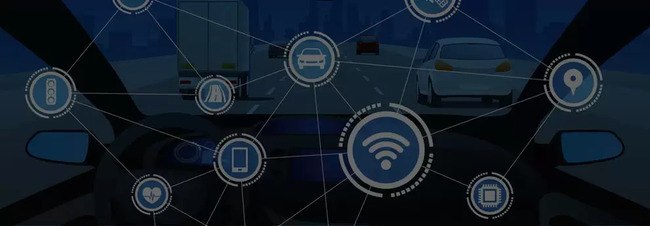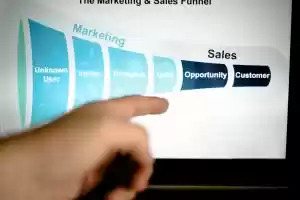Today’s digital world offers a number of different platforms for engaging with customers. Each one has a particular audience it reaches most effectively, targeting different populations and people at different stages of the buyer’s journey. Marketers must understand how the different platforms interact, how they line up with different touch-points, and where they can find their target audience at different stages of their journey towards conversion.
An estimated 71 percent of customers say that they want a consistent experience across all channels where they interact with brands, but less than a quarter report actually receiving it during their buyer's journey. Brands that understand how to use cross-channel marketing will have the chance to capture the attention of these potential customers and demonstrate their commitment to the customer experience. Organizations must understand how to optimize their use of the different marketing channels during the buyer's journey so that these customers receive a consistent user experience.
As marketers begin to develop their buyer's journey digital marketing strategy, it is important for them to have an omni-channel approach. It is not enough to simply market to customers on different platforms. You do not want to run simultaneous campaigns through different channels. Instead, organizations should focus on having a consistent experience for customers regardless of where they interact with the brand. All the channels should work together to bring customers through the buyer’s journey across different touch-points on different platforms.
Here is what we wanted to share with our community about running integrated campaigns to enhance the buyer's journey sales funnel.
Understand the different types of digital marketing
Before we dive into building a firm understanding of running these omni-channel campaigns, let’s first explore the role that these different channels play in multi-channel marketing.

What is SEO and content marketing?
SEO and content marketing describe the material you use to attract people through the SERPs. You optimize this material with keywords, topics, and promotion to help Google find the material and then to encourage the search engines to rank it highly on the SERP. You can utilize the BrightEdge Data Cube to drive your keyword research efforts. Using Data Cube before or during your SEO strategy will help you to create the content your audience wants to read. Decide which keywords to use before you spend time writing content or after you write it to revise and optimize existing content for new keywords. Your SEO strategy using Data Cube can increase organic traffic, results, leads, etc. Check out how Graco Inc. did it!
With content marketing and SEO, you need to have a firm understanding of keyword research to identify topics of interest for your target audience throughout the buyer's journey. You also must produce quality writing, video, and images to attract users and search engines. Website metrics will help you monitor your success with this material.
What is social media marketing?
Social media marketing involves engaging with prospective customers through the various social media platforms, including Facebook, LinkedIn, and Twitter. When running campaigns on these platforms throughout the buyer's journey, you might run promotions, promote content you think followers will appreciate, and inspire conversations to keep people engaged with your brand. The goal here lies in regularly producing high-value content. Discover how SEO and social media power together to create a strong bond with this BrightEdge POV.
What is email marketing?
Email marketing uses registration pages to capture the contact information for site visitors. This contact information can then be used to create segmented email lists. Brands that maximize their potential here during the buyer's journey understand how to send material that will interest their site visitors, encouraging them to engage more with the brand and continue to move through the sales funnel.
What is mobile marketing?
Mobile marketing involves understanding how to use these different channels throughout the buyer's journey and maximize your ability to engage with users accessing them through mobile devices. According to BrightEdge Research, nearly 2/3 of Americans are smartphone owners and 57 percent of searches are performed on mobile devices.
BrightEdge offers a mobile option for discovery. While you add and track keywords in BrightEdge Keyword Reporting, you can easily navigate through different device types including desktop, tablet, and smartphone in order to collect data on how your keywords and pages are doing by device. Knowing how to appeal to people on-the-go will enhance a brands’ ability to remain relevant.
What is paid marketing?
Paid marketing, also known as PPC, includes the ads you can post on several different platforms, including the Google SERPs themselves, social media platforms, and even on other, ad-friendly, websites. Success at this point in the buyer's journey involves knowing the keywords that correspond with the visitors who are most likely to find your content calendar helpful or finding contextually or behaviorally aligned sites on which to place your ads.
Before you decide to spend your budget on paid advertising, it is a good idea to do plenty of research to make sure you're getting the most for your money. By using BrightEdge Instant, you can see real-time results with real-time research to determine whether or not a keyword is worth paying to promote.
What other channels should brands consider?
In addition to these central digital channels, many organizations also find it helpful to remember other traditional advertising areas, including radio and TV ads and in-store promotions. Although these channels function quite differently from digital options, ensuring that they remain consistent with digital marketing efforts will engage and advance customers at a better rate.
Understand the common platforms that influence customers throughout the funnel
To build effective omni-channel campaigns, you need to now take these different channels and bring them together. Understand the channels and touchpoints potential customers will most likely encounter as they move through your buyer’s journey. Some of this information will be customized to your precise customers, but here is a good starting point based on where most brands find their customers at various phases in the buyer’s journey.
Channels for the Awareness Stage
During the awareness stage of the buyer's journey, customers are looking for information about their pain points and potential solutions. Thus, they perform a lot of searches, building the importance of SEO and content marketing. Content production should also include videos and webinars as alternative ways to engage potential customers and interest them in the brand.
Complementing your SEO and content production efforts should be PPC campaigns, which will run for similar core topics as the content marketing and SEO efforts. Use PPC throughout the buyer's journey to attract attention to important keywords that your material does not yet rank for.
Similarly, during the buyer's journey, email can keep customers engaged and learning about your potential solution for their pain point.
Channels for the Evaluation Stage
During the evaluation stage of the buyer's journey, customers have narrowed down their options and seriously consider your brand as a potential solution to their pain point. Continue to demonstrate your expertise and ability to help with content on your website, webinars, and ebooks. This material will help them dive deeply into the solutions you offer during this step of the buyer's journey. Before launching a webinar, get your basic approach to creating a successful one with this BrightEdge checklist.
Social media will also play an increasing role here, as prospects turn to the platforms to engage directly with your brand and gauge your ability to help them.
Customers may also reach a stage of the buyer's journey where they want to see quality demos that allow them to see first-hand how you will help them.
Channels for the Purchase Stage
During the purchase stage, customers continue to engage with the content you produce and use the search engines to learn more about the product or service they have purchased. They want to make sure they get the best value possible.
Events you host and meetings you can offer your customers during this period can also help keep them engaged with the company and be happy with their purchase. This sets the stage for repeat customers.
Channels for the Usage Stage
While customers use your product or service, you want to make sure that what they have purchased solves their pain points and continues to benefit them. Your email list will provide value here as you can regularly send customers articles to help them maximize their usage of your product.
You can also continue to produce content that customers at this stage of the buyer's journey find helpful, such as FAQ pages and case studies, helping them to see how others have seen great results with your brand.
Channels for the Repurchase Stage
During the repurchase phase of the buyer's journey, you need to convince people who have purchased from you before that they want to purchase from you again. Creating content that once again demonstrates your superiority over the competition can help. Email messages that help customers learn more about getting the most out of their purchase and also remind them of the successes they have already seen will help at this stage of the buyer's journey.
Channels for the Advocacy Stage
Once you have already convinced a customer to buy from you again, now you want to turn them into an advocate. Customers willing to speak highly of you to other prospects can be a powerful source of persuasion. Encouraging them to help you produce content, such as case studies or even writing reviews can benefit your organization. Use email, social media, and events to remain closely connected to these repeat customers.
Bringing your different channels together
Now that you understand how these different channels typically interact throughout the buyer’s journey, let’s review how to bring the platforms together to create an omni-channel approach that nurtures customers through each stage of the funnel.
Understand buyer personas
To create a successful campaign across these channels, you must understand your buyer personas. Know what these customers want to see and the pain point they want to solve. The better you understand where the prospect is coming from, the easier it will be to produce content tailored to their unique needs.
 You will also be better equipped to coax them through the sales funnel. You will find it easier to find the customers across the different channels, and you will know what they want to see as they get closer to conversion.
You will also be better equipped to coax them through the sales funnel. You will find it easier to find the customers across the different channels, and you will know what they want to see as they get closer to conversion.
Create a common campaign
With your understanding of your customer personas and your use of different platforms, work with specialists across the different platforms within your company to create common campaigns. Your campaigns should follow the customers' buyer’s journey and work to coax them from one touchpoint to the next. The campaign should create a consistent user experience and operate with well-aligned goals.
Know how your different platforms and channels work together throughout the buyer's journey. For example, your PPC strategy will drive traffic, while your site content should then take that traffic and build engagement and the number of people who register for email lists.
Measure progress
As you create your integrated campaigns, carefully measure your progress for each step of the buyer's journey. Your selected KPIs should explore how well your campaign brings people from one stage of the buyer's journey to the next. For example, measure top-of-the-funnel channels by looking at new visitors and engagement. As you move into the mid-funnel, gauge your return visitors, their engagement, and their rate of mid-funnel conversions.
Looking at all your channels and platforms together as a part of a single customer engagement picture will give you a better understanding of how your different strategies can work together to bring in new customers.
Building omni-channel campaigns throughout the buyer's journey will allow you to take your marketing strategy to the next level. You will improve your ability to engage with customers as they move throughout the digital atmosphere. Bring your channels together and help them function together as one and see how you can improve your own customer engagement ability for a repeated buyer's journey.
